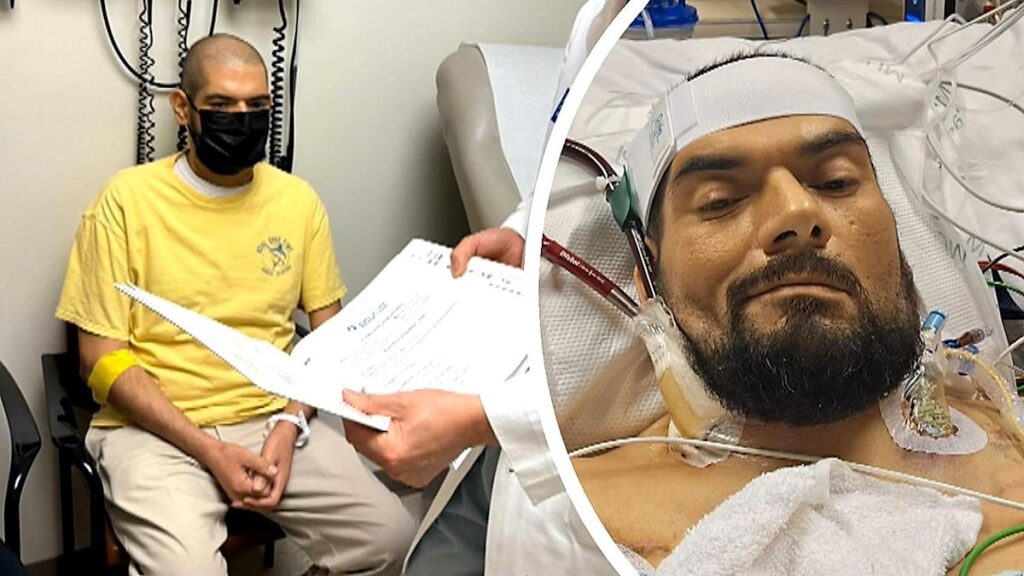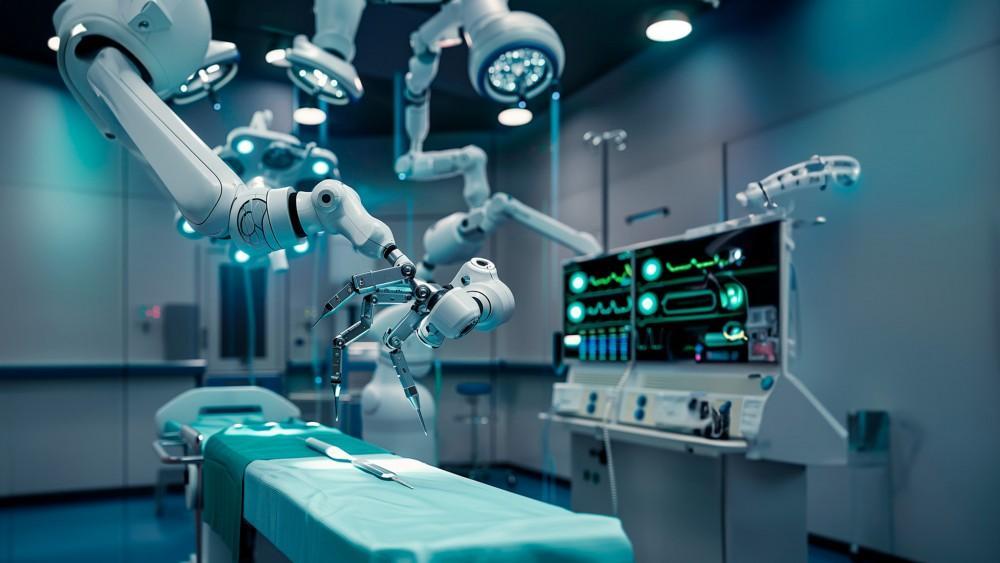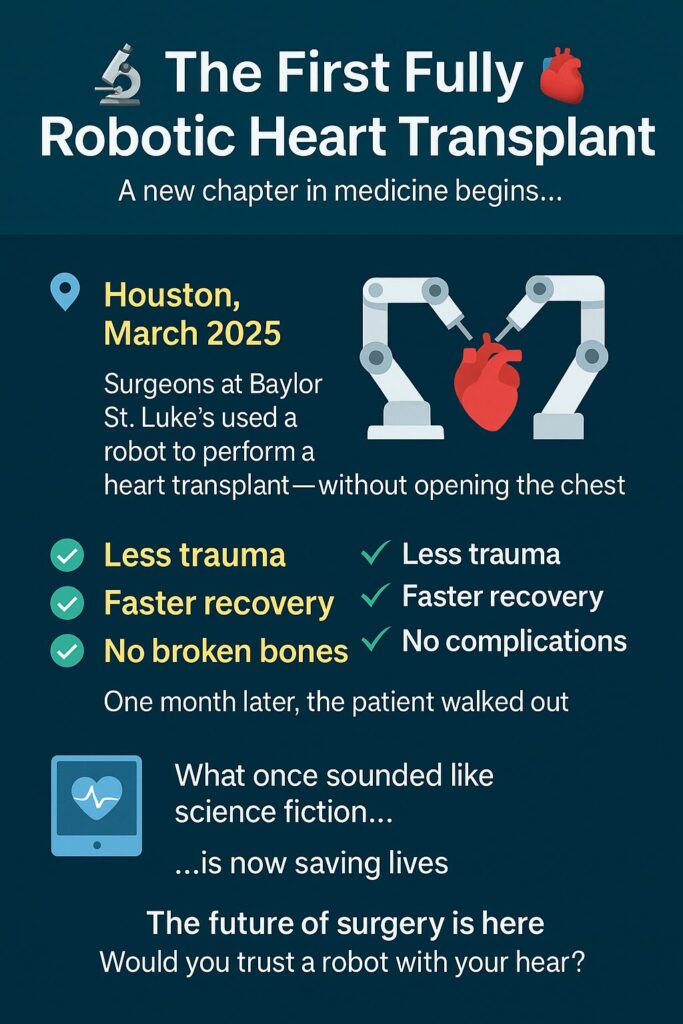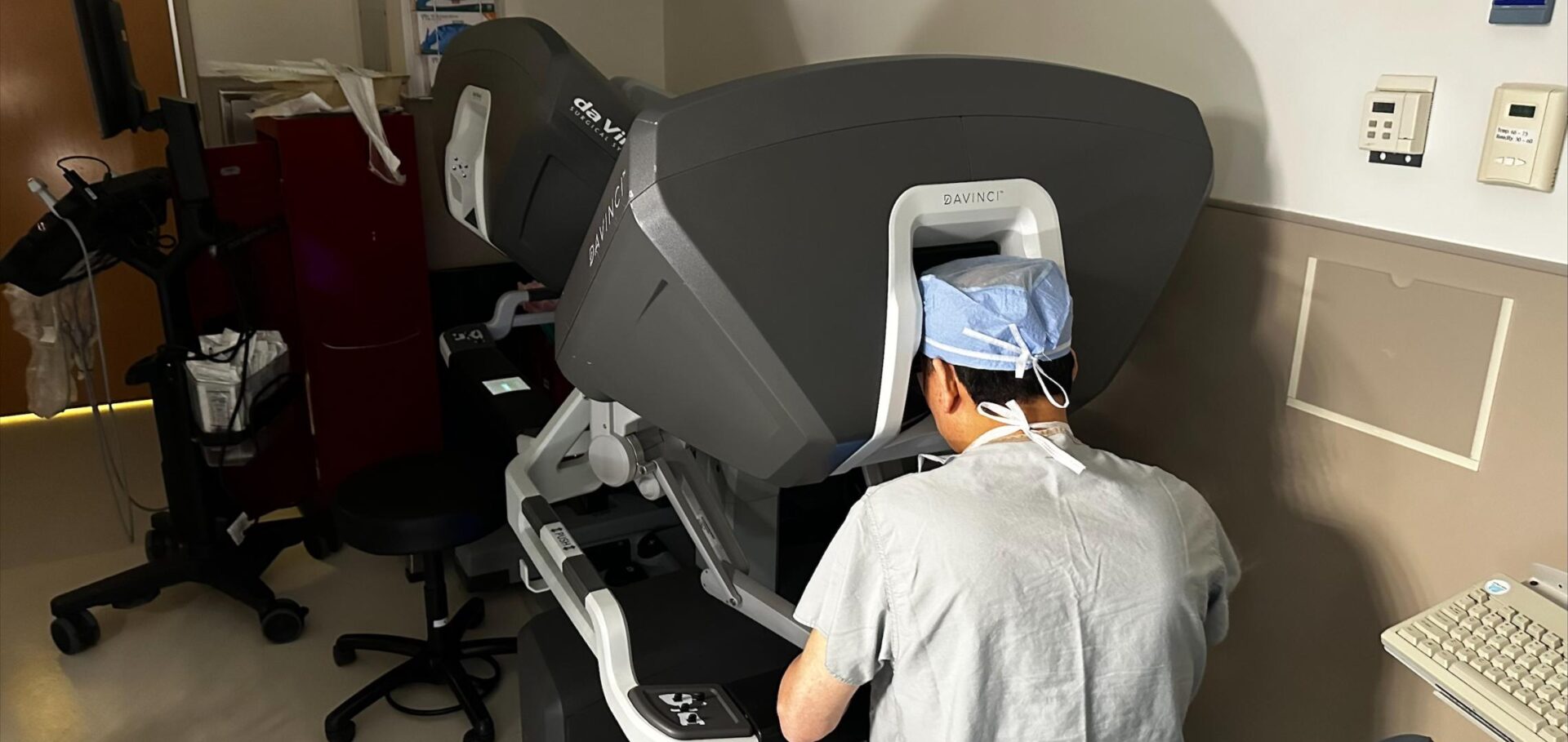What once sounded like science fiction is now becoming standard in operating rooms. In March 2025, a team of surgeons at Baylor St. Luke’s Medical Center in Houston performed the first fully robotic heart transplant in the United States—a moment that marks a powerful turning point in modern medicine.
Using robotic arms instead of traditional surgical tools, doctors removed a failing heart and implanted a new one—all without opening the patient’s chest. Instead of the classic approach that involves breaking the breastbone, this procedure was completed through small incisions using a sophisticated system known as the Da Vinci robot. Think of it as replacing a car engine, not by lifting the hood, but by using precise tools through narrow access points—less disruption, less damage.
Musumeci Online – The Podcast. It is perfect for driving, commuting, or waiting in line!
Why This Changes Everything
Normally, heart transplants are extremely invasive. Surgeons have to cut through the sternum (the chest bone), which can lead to a long, painful recovery. For heart transplant patients—who must take medications that suppress their immune systems to prevent organ rejection—this kind of invasive surgery raises the risk of serious infections.
But with robotics, things look very different. According to Dr. Kenneth Liao, the lead surgeon behind the procedure, this new approach preserves the chest wall, greatly reducing the risk of infection. It also speeds up the recovery process, improves breathing function, and helps patients get back on their feet sooner. Imagine recovering from a major operation not in months, but in weeks.

And there’s more: less trauma to the body means less bleeding, fewer blood transfusions, and a lower chance of developing antibodies that could attack the new heart in the future.
From the ICU to a New Life
The first U.S. patient to receive this revolutionary transplant was a 45-year-old man who had spent four months in the hospital battling advanced heart failure. After the robotic surgery, he stayed just one more month in recovery—and walked out of the hospital without any complications.
His story is more than a personal triumph. It’s a glimpse into what healthcare might look like tomorrow. Where surgery is safer, recovery is faster, and medical teams can offer hope to even the most complex cases.
“This transplant shows what is possible when innovation and surgical experience come together to improve patient care”, Dr. Liao
Robotic Surgery: The Quiet Revolution in Medicine
This milestone builds on another first: In September 2024, a hospital in Riyadh, Saudi Arabia performed the world’s first-ever fully robotic heart transplant on a 16-year-old. Now, with the U.S. joining this elite club, the momentum is growing.
Robotic-assisted surgery isn’t limited to heart transplants. It’s already transforming many areas of healthcare—from prostate cancer operations to complex neurosurgery. As robotic tools become more refined, doctors can reach deeper, act more precisely, and reduce collateral damage to healthy tissues. Imagine painting a miniature figure with the help of a microscope and a robotic hand steadier than any human could be. That’s the level of precision we’re talking about.

The Bigger Picture: Technology Meets Compassion
“This transplant shows what is possible when innovation and surgical experience come together to improve patient care,” said Dr. Liao. And indeed, this is a perfect example of how cutting-edge technology can serve a very human goal: helping people heal better and live longer.
At Baylor St. Luke’s Medical Center, this achievement is more than a trophy. It’s part of a broader mission—to care for the most difficult conditions that only advanced medical systems can treat successfully.

A New Chapter in Medical History
We are living in a time when machines and human expertise are merging to tackle problems once thought impossible. Robotic heart transplants are just the beginning. In the years ahead, we might see artificial intelligence guiding diagnoses, virtual reality helping train surgeons, and even brain-computer interfaces restoring mobility or memory.
But even as we race forward, the goal remains the same: to make care safer, faster, and more humane.
This moment in Houston is more than a medical first—it’s a symbol of how far we’ve come, and how much farther we can go.


Leave a Reply